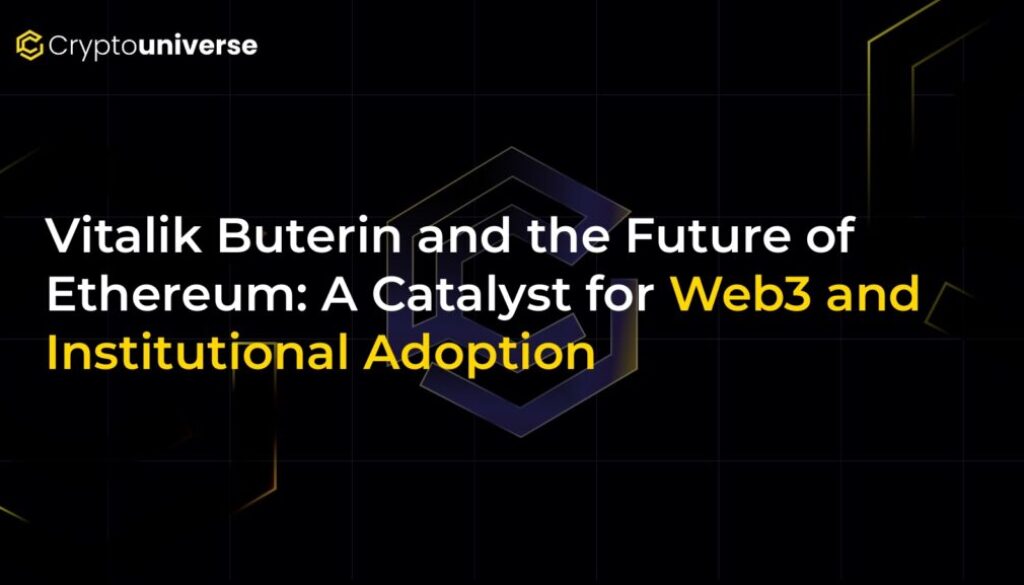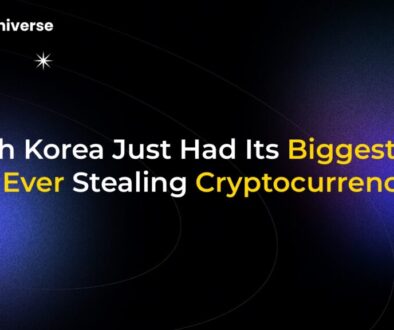Vitalik Buterin and the Future of Ethereum: A Catalyst for Web3 and Institutional Adoption

The Gamer Who Built a World Computer
The story of Ethereum doesn’t start in a boardroom or a university lab. It starts with a video game. When the developers of World of Warcraft “nerfed” his favorite warlock character, a young Vitalik Buterin had a powerful realization: centralized systems hold all the power. This single event sparked the idea for a new kind of internet—a decentralized world computer that no single entity could control. That idea became Ethereum.
Today, Ethereum is more than just a cryptocurrency; it’s a foundational layer for a new digital era known as Web3. Guided by Buterin’s unwavering vision, the platform is undergoing a radical transformation, addressing its biggest challenges and capturing the attention of the world’s largest financial institutions. Let’s explore how Vitalik Buterin’s leadership is shaping the future of Ethereum and paving the way for mainstream and institutional adoption.
From Vision to Reality: Redefining Decentralization
Vitalik Buterin’s 2013 whitepaper was revolutionary. It proposed a blockchain that could do more than just process transactions; it could execute smart contracts, enabling developers to build decentralized applications (dApps). This concept of a “world computer” has since blossomed into a thriving ecosystem of decentralized finance (DeFi), NFTs, and decentralized autonomous organizations (DAOs).
Buterin’s commitment to this vision is legendary. He famously turned down offers from tech giants like Google and Facebook, choosing to preserve Ethereum’s decentralized ethos over personal gain. This dedication is the bedrock of the network’s most significant upgrade to date: The Merge.
The shift from Proof-of-Work (PoW) to Proof-of-Stake (PoS) did more than just slash Ethereum’s energy consumption by over 99%. It fundamentally altered its governance and security model, making the network more robust, decentralized, and attractive for long-term holders who can stake their ETH to help secure the network and earn rewards.
Solving the Scalability Puzzle for Mass Adoption
For years, Ethereum’s biggest hurdle was scalability. High gas fees and slow transaction times priced out many users and applications. Buterin and the Ethereum developer community tackled this head-on with a multi-pronged strategy centered on Layer 2 (L2) scaling solutions.
Technologies like Zero-Knowledge (ZK) rollups and Optimistic rollups have been game-changers. They work by bundling hundreds of transactions off-chain and submitting a single proof to the main Ethereum network. The results are staggering:
- 98% Reduction in Transaction Costs: Fees that once soared to over $50 during peak times have plummeted to less than a dollar on L2s.
- Massive Throughput: By 2025, L2s are projected to handle over 40% of all blockchain transactions, making Ethereum a viable platform for everything from micropayments to global supply chain management.
Buterin’s roadmap doesn’t stop there. Future upgrades like sharding aim to push Ethereum’s capacity to over 100,000 transactions per second, ensuring the network can support billions of users without compromising its core principles of security and decentralization.
The Institutional Stampede: Why Wall Street is Backing Ethereum
While the crypto world shouts about market volatility, institutions are quietly placing their bets on Ethereum’s stability and reliability. As one observer noted, institutions are backing ETH because “it just keeps running. It doesn’t go down.” This reliability, combined with a clearer regulatory landscape, has unlocked the floodgates for institutional capital.
The approval of spot Ethereum ETFs in 2024 was a watershed moment, legitimizing ETH as a mainstream investment asset. This move brought in over $12 billion in inflows within months, with institutions now holding approximately 2.5% of the total ETH supply.
What makes Ethereum so appealing to big money?
- Dual-Income Asset: Investors benefit from both potential price appreciation and a steady yield. Staking infrastructure offers annual yields between 4-6%.
- Deflationary Economics: The EIP-1559 upgrade burns a portion of every transaction fee, permanently removing ETH from circulation. During periods of high network activity, more ETH is burned than created, making it a deflationary asset.
- DeFi Dominance: Ethereum remains the undisputed king of decentralized finance, securing over 65% of the total value locked (TVL) across all blockchains.
Beyond Finance: Ethereum’s Growing Social Impact
Vitalik Buterin’s vision extends far beyond finance. He is a vocal advocate for using blockchain for social good and making the technology accessible to everyone. His humility is a reflection of this mission; he’s been known to show up at small conferences by bus, soaking wet from the rain, ready to engage with the community.
He has championed initiatives to simplify Ethereum’s architecture with user-friendly tools and APIs, aiming to bridge the gap between developers and the general public. This focus is driving adoption in critical sectors:
- Education & Healthcare: Decentralized identity systems and tokenized credentials can streamline verification and reduce fraud.
- Charitable Giving: Buterin has personally demonstrated crypto’s potential for good by donating millions from memecoin sales to charitable causes, proving that digital assets can be a powerful force for social change.
The Next Decade: A Trustless, Private, and Seamless Future
Vitalik Buterin’s strategic leadership has successfully navigated Ethereum from a speculative experiment to the foundational settlement layer of Web3. By relentlessly focusing on decentralization, scalability, and real-world utility, he has built a platform that attracts both grassroots developers and Wall Street giants.
Looking ahead, Buterin’s vision for the next ten years includes ultra-light nodes for greater accessibility, default privacy features, and seamless self-custody solutions. The goal is to create a fully verified, trustless computing environment that empowers individuals and redefines the internet. As Ethereum continues to evolve, one thing is clear: its journey is just getting started, and its potential as a long-term investment remains more compelling than ever.


